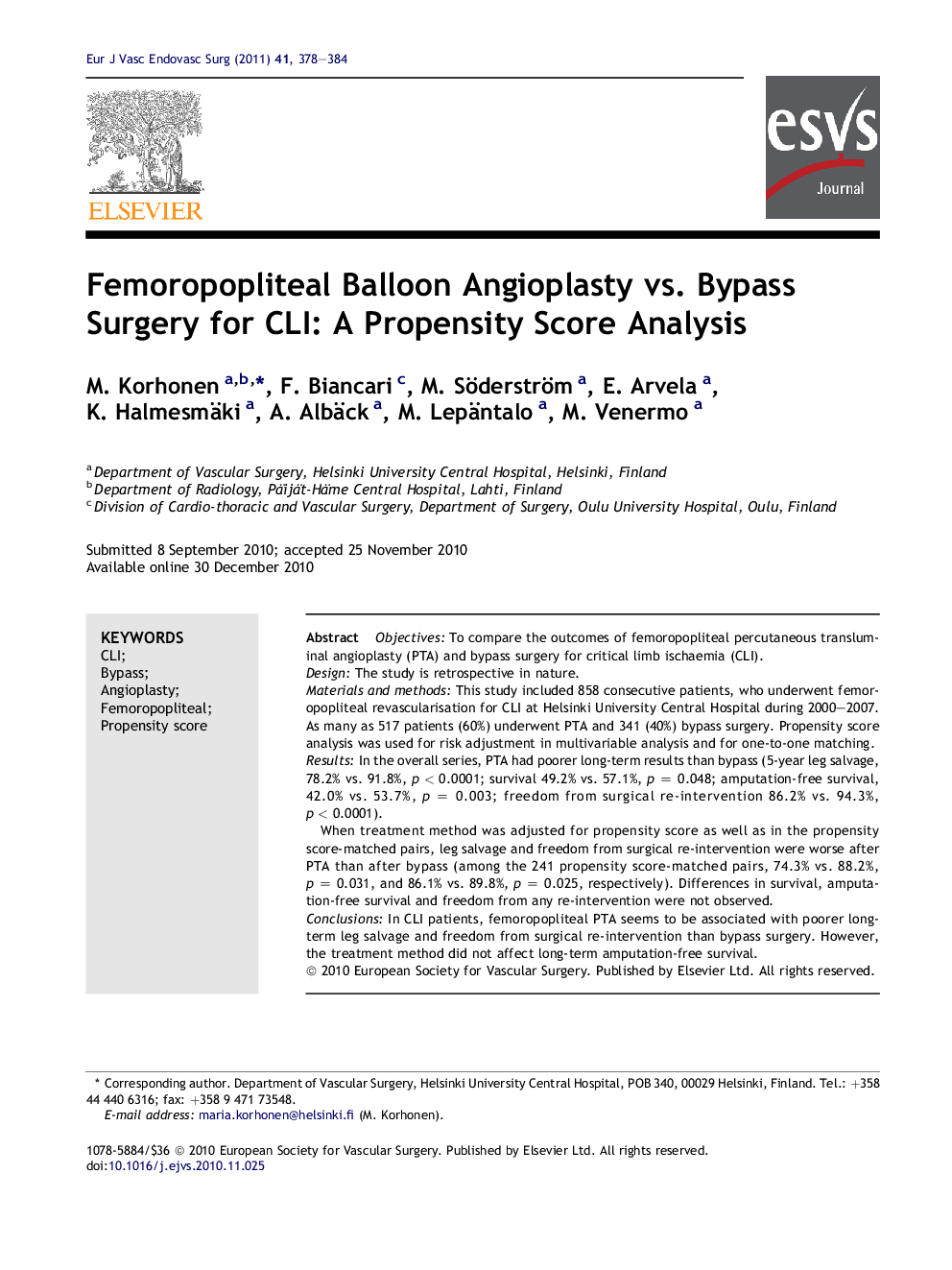| Article ID | Journal | Published Year | Pages | File Type |
|---|---|---|---|---|
| 2913566 | European Journal of Vascular and Endovascular Surgery | 2011 | 7 Pages |
ObjectivesTo compare the outcomes of femoropopliteal percutaneous transluminal angioplasty (PTA) and bypass surgery for critical limb ischaemia (CLI).DesignThe study is retrospective in nature.Materials and methodsThis study included 858 consecutive patients, who underwent femoropopliteal revascularisation for CLI at Helsinki University Central Hospital during 2000–2007. As many as 517 patients (60%) underwent PTA and 341 (40%) bypass surgery. Propensity score analysis was used for risk adjustment in multivariable analysis and for one-to-one matching.ResultsIn the overall series, PTA had poorer long-term results than bypass (5-year leg salvage, 78.2% vs. 91.8%, p < 0.0001; survival 49.2% vs. 57.1%, p = 0.048; amputation-free survival, 42.0% vs. 53.7%, p = 0.003; freedom from surgical re-intervention 86.2% vs. 94.3%, p < 0.0001).When treatment method was adjusted for propensity score as well as in the propensity score-matched pairs, leg salvage and freedom from surgical re-intervention were worse after PTA than after bypass (among the 241 propensity score-matched pairs, 74.3% vs. 88.2%, p = 0.031, and 86.1% vs. 89.8%, p = 0.025, respectively). Differences in survival, amputation-free survival and freedom from any re-intervention were not observed.ConclusionsIn CLI patients, femoropopliteal PTA seems to be associated with poorer long-term leg salvage and freedom from surgical re-intervention than bypass surgery. However, the treatment method did not affect long-term amputation-free survival.
